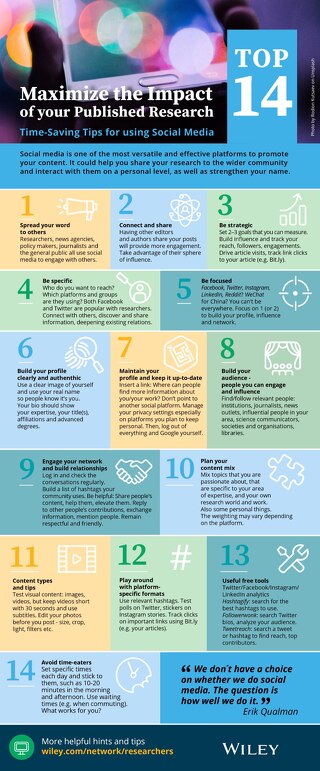are-graphical-abstracts-changing-the-way-we-publish
June 05, 2015
"Safe is good for sidewalks and swimming pools but life requires risk if we are to get anywhere."
This inspiring quote by author and motivational speaker Simon Sinek made something click in my head. As a rigid process with a rigid structure, scientific publishing hasn’t changed much in the last few decades. It is safe for the author and publisher, and has always been done like this, but are we getting anywhere?
Graphical abstract from Kim et al., Journal of Cheminformatics,
The “optimized” format of title, abstract, introduction, materials and methods, results, discussion, and references certainly works. It has proven its efficacy countless times. This form of publishing is so obvious that it is not even challenged anymore. This unquestioning acceptance might be rather strange for scientists, but it feels safe.
We all know that safe is the enemy of innovation. Even in the innovative field of science, most of us are constantly looking for a safe place. This is perfectly understandable, as most of the time during our evolution we were living in dangerous environments and finding a safe place was the best or only strategy for survival. To survive in dangerous environments, it is key to keep a low profile and not attract attention. Nowadays, this constant life-threatening danger is gone, but our behavior hasn’t changed a lot. Even though the threats are of a totally different caliber, we’re always still looking for safety, which often equates to fitting in.
Maybe the real danger of today is the false feeling of safety. We tell ourselves that it is safe to do things (like scientific publishing) as they have always been done. But the danger is that innovative strategies might disrupt long-lasting standards with incredible speed, as happened when digital photography moved analog photography out of the market, or when the music industry wasturned upside down in a matter of months by new ways of music distribution.
We live in a media landscape where information consumption has changed drastically in the last two decades. Today, most information uptake happens via online media and we digest the news in little chunks rather than big bodies of text. The time is now for some innovative journals to come up with new ways of scientific publishing. One step in this direction is already happening with the emerging phenomenon of graphical abstracts.
Graphical abstract from Kim et al., Journal of Cheminformatics,
DOI: 10.1186/1758-2946-4-28
A graphical abstract is a single and concise visual representation of the presented research. It should be a summary of the main findings of the paper captured in a specially designed figure.
That is how most, if not all, scientific journals communicate the meaning of a graphical abstracts to authors. It makes sense. It is a step towards making the information more easily accessible and it communicates the main message in short time frame. A picture is worth a thousand words, remember.
A graphical abstract is certainly not a replacement for the classical way of publishing research, but it is a welcome addition. But yet, not everybody in the scientific community is pleased with this new format. One of the most frequent objections is the extra work. Authors often see it as just another figure. As a result, most graphical abstracts are an upgraded version of the conclusion slide of the talk that goes along with the publication.
I’m not sure if this very helpful for the perceived quality of the publication and I’m not sure if this is an improvement at all. But let’s try to approach it from another angle.
Change always creates opportunity. However, most people don’t like change, because change is often seen as unsafe. Most people avoid new things and prefer to stick to the methods they know very well, the safe place. For them change creates a chance for failure and the resulting fear overwhelms them so much that they don’t see the huge opportunity anymore. The innovative scientist, on the other hand, embraces change, reaches out to the unsafe and unknown, and is prepared to fail. She knows that the possibility of failure is the only way to success.
This might sound as if the reckless scientist, the one who tries it all, will succeed. This is of course flawed. The rationale and motivation to try new approaches have to be sound. The motivation has to come from the inside and the scientist who will be open to new approaches needs to be informed and persuaded adequately. Here it often goes wrong.
Most publishing authors know “what” a graphical abstract is. Journals that publish graphical abstracts describe nicely what it is on their websites. However, it is much more difficult to answer the more important questions “why” and “how.” This information is absent on most publishers’ websites and is not mentioned in the instructions to authors.
It is understandable that, without a clear rationale, not many authors see the added value or the opportunity for them. Consequently, the only thing they see is the extra work. Isn’t it much more motivating to do the work when we have a good reason?
If authors publish a research paper that cost them endless experiments and months of hard work, presumably they would like people to read their findings. In fact, it may be considered their moral obligation to reach as many fellow scientists as possible. It is an essential aspect of effective science communication and it is key to the advancement of science.
The huge and unique opportunity a graphical abstract offers to authors is the possibility to drive traffic to their research. It is more than a summary of research. Authors should envision it as the marketing message, the advertisement of their work. It is the authors’ chance to capture their audience’s attention, to make them so interested that they want to read more. If authors want to succeed they’ll need to adapt their communication to the fast-evolving media landscape, including social media platforms. Graphical abstracts are very well suited for this.
If authors start with this motivation and rationale, the next step is to define how this can be achieved with a graphical abstract. Authors should focus on design, composition, and aesthetics to emphasize the most important findings. People get inspired by beauty, and aesthetic compositions are easier to understand. Authors should consider the context in which the graphical abstract will be seen. This is mostly online (in contrast to a seminar room, which is likely the venue for which the PowerPoint slide now submitted as a graphical abstract was first created). Authors should try to put themselves in the shoes of potential readers and find out what sparks their interest. A good starting point is for authors to look at themselves, and consider what attracts their own attention.
Giving a different focus and purpose to a graphical abstract—opening the door to one’s research versus making a concise visual representation of the paper—creates an opportunity for authors to get more people to read their research. The innovative scientist who uses this knowledge and optimizes a graphical abstract to attract the right attention will benefit. Her work will be seen by more people, possibly leading to more interest in her research. This may lead to unexpected collaborations and more funding, citations, and recognition.
All this works as a positive feedback loop, accelerating the momentum to get even more opportunities. The innovative scientist values her research and takes the leap.
The post above was reprinted with permission from April 2015 edition of the International Society of Managing and Technical Editors newsletter.













